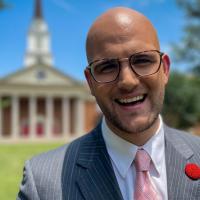Artist Reginald Adams' Murals Honor Juneteenth in Major US Cities
A public art project celebrating Juneteenth is gaining national attention in major cities through murals portraying the fight for equality.
Reginald C. Adams, a prominent artist known for his public art, tells CBN News his latest installment in Washington D.C. is a way of using his freedom to spread a message for future "freedom fighters." The aim for his latest installment, "Absolute Equality to Rights and Freedom," seeks to spread awareness of Juneteenth's history, which is often misunderstood and misrepresented.
"Ever since I was a child, I dreamed of creating," said Adams. "So, I live a high sense of freedom in that I get to do what I love."
Adams' work brings the history of Juneteenth to life, highlighting significant moments such as the two and a half years after the Emancipation Proclamation when over 250,000 enslaved Black Texans were still held captive.
"It took the army and this declaration, which we recognize as General Order Number Three," Adams explained.
That order forced Texas to grant "absolute equality to rights and freedom" to enslaved people, which inspired the name of Adams' project.
"Absolute equality isn't a destination, it's a journey. It's a pursuit, and it's manifested in the collaboration of people coming from different backgrounds, different perspectives, different realities," he said.
The project started in Galveston, Texas, the birthplace of Juneteenth, and now includes 13 murals across major U.S. cities, including Washington, D.C., honoring prominent African Americans like Frederick Douglass.
Adams reflects on Douglass' legacy, stating, "If Frederick Douglass was alive, would he want just another portrait of himself? Probably not. He'd probably be interested in a message around education or literacy because he was an advocate for education."
These murals aim to inspire conversations about the history of equality, helping onlookers appreciate diverse heritage and think critically about the world around them.
Adams emphasizes the resilience of public art, noting, "Socially we have forces that are trying to ban books, ban history. It is hard to ban public art. When you put a message on Main Street, on a major intersection… no matter who you are, you get exposure to that message."
Adams plans to continue growing the project, with the goal of creating murals in seven more cities by 2025.




